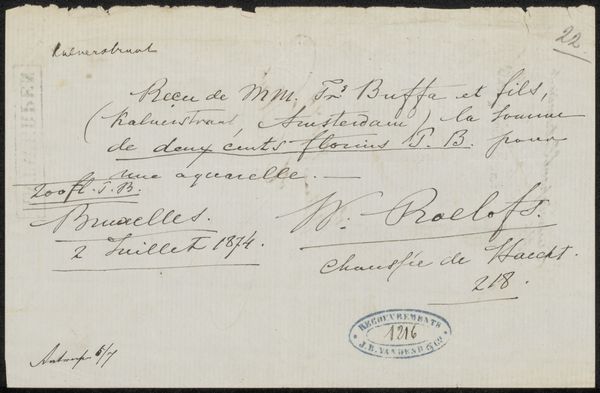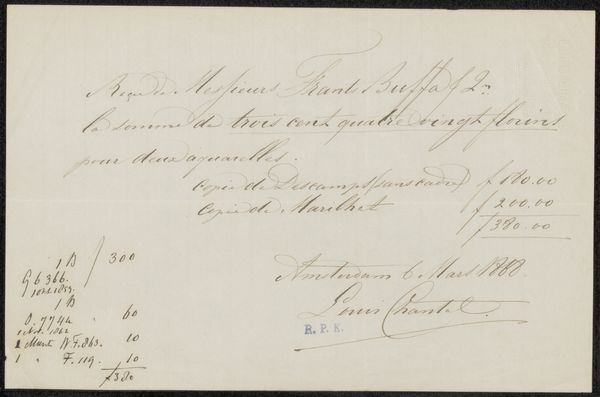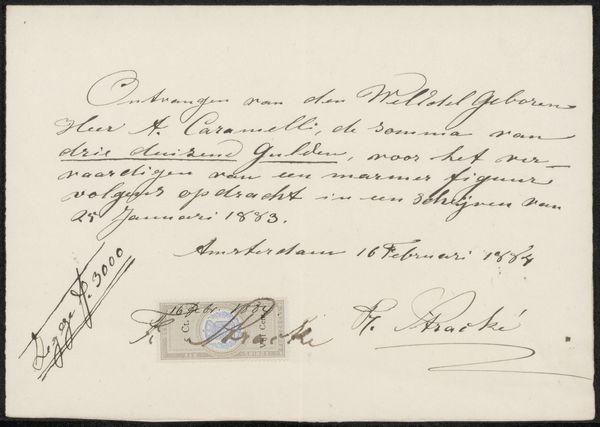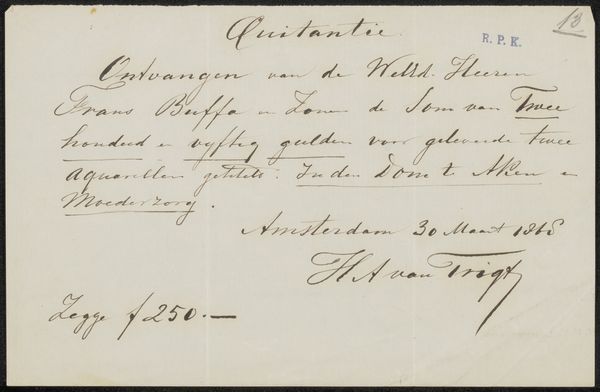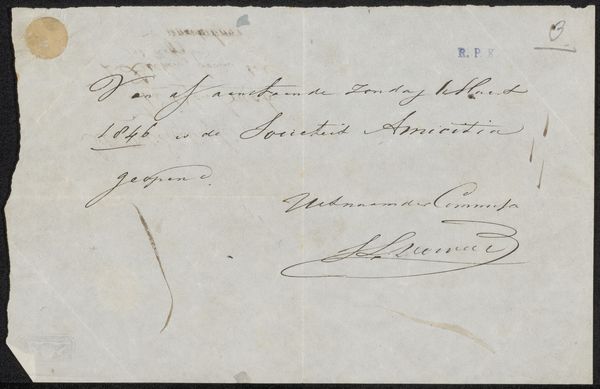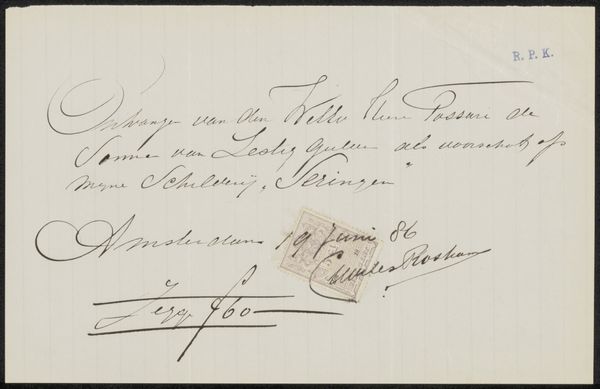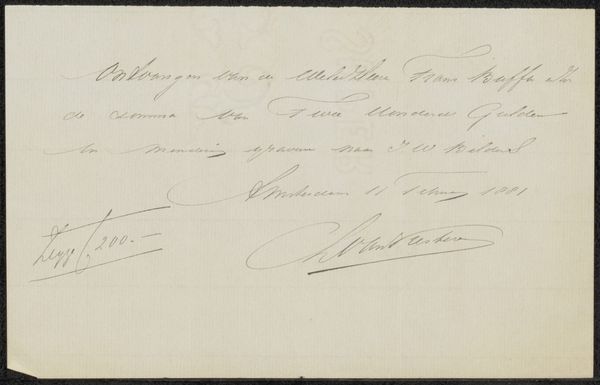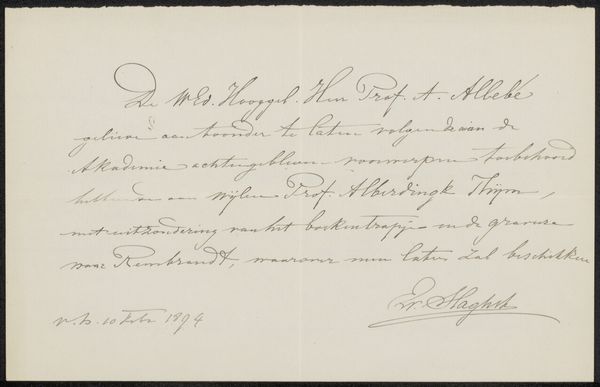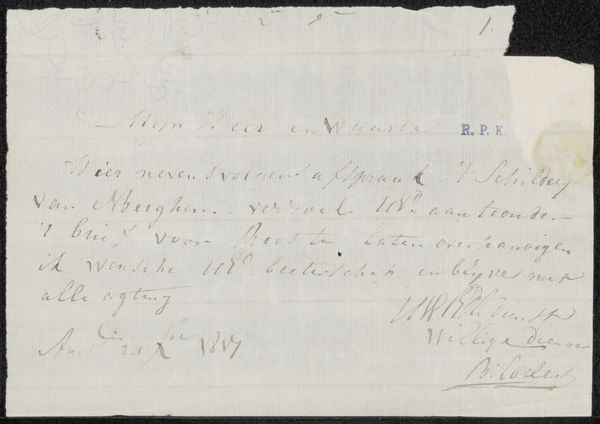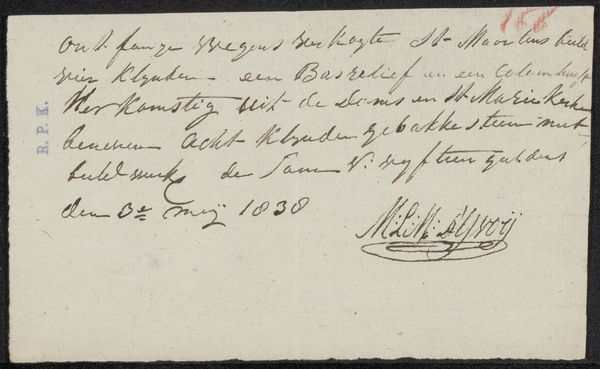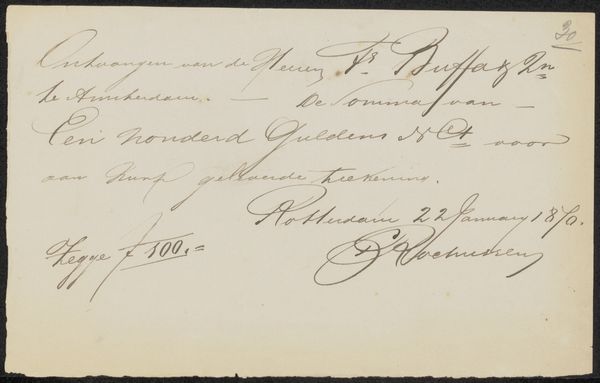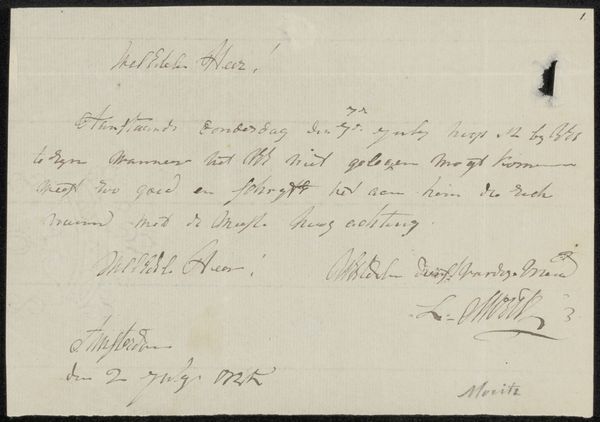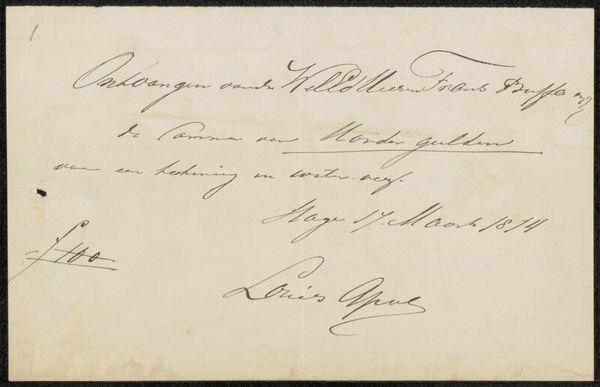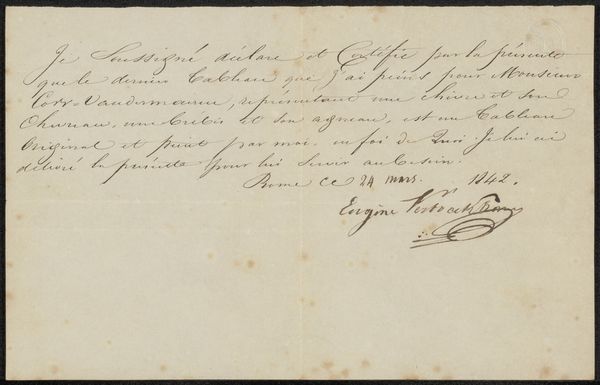
drawing, mixed-media, print, paper, ink
#
drawing
#
mixed-media
#
dutch-golden-age
# print
#
landscape
#
paper
#
ink
Copyright: Rijks Museum: Open Domain
This is Willem Roelofs’ receipt for two hundred guilders, made in 1874 with pen and ink on paper. Roelofs was paid by the art dealers Buffa and Sons, who had a gallery in Amsterdam. The bill is written in French, which at the time was the language of diplomacy, commerce, and high culture, so it’s no surprise that the Dutch art world adopted it. Roelofs was part of the Hague School, a group of Dutch artists who painted in a realistic style, often focusing on landscapes and scenes of everyday life. But how did an artist get paid in those days? Well, it all depended on patronage: wealthy individuals, governments, or institutions that commissioned or bought artworks. In this case, the dealer Buffa likely sold Roelofs' works to such patrons. Historians of art and economics can use sources like this to reconstruct these patronage networks. By understanding the art market, we can shed light on the social and economic conditions that made the art possible. Art does not exist in a vacuum.
Comments
No comments
Be the first to comment and join the conversation on the ultimate creative platform.
